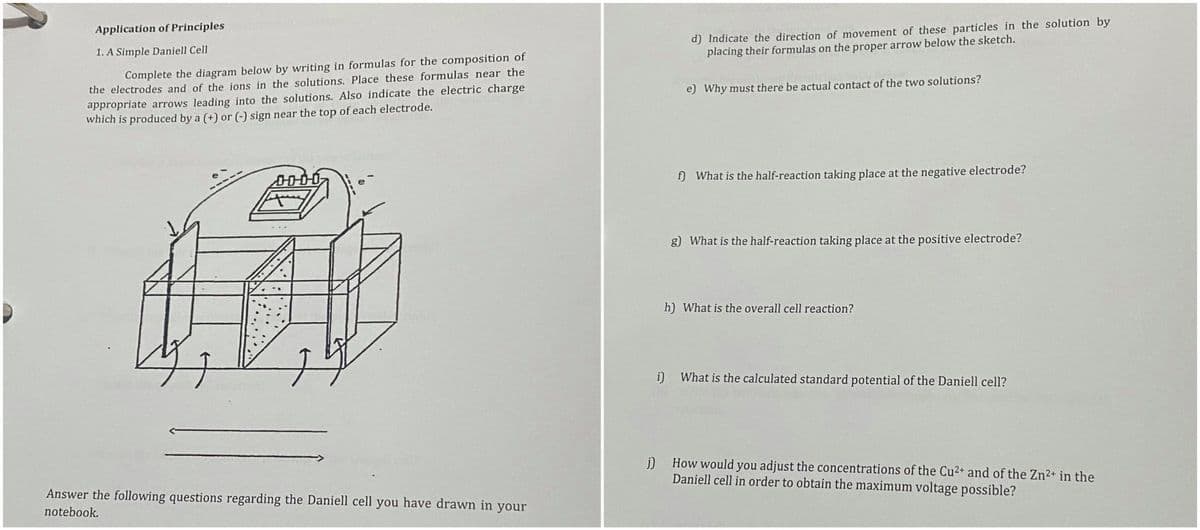1. A Simple Daniell Cell Complete the diagram below by writing in formulas for the composition of the electrodes and of the ions in the solutions. Place these formulas near the appropriate arrows leading into the solutions. Also indicate the electric charge which is produced by a (+) or (-) sign near the top of each electrode.
Organic Chemistry of Metabolic Pathways
Metabolic pathways allude to the arrangement of chemical catalyzed reactions that lead to the transformation of a substance into the final product. Metabolic pathways incorporate a progression of reaction where the substrate is changed continuously and the transitional metabolites are persistently recovered.
Glucogenesis
Glucogenesis is a metabolic pathway in which glucose is produced from carbon substrates that are not carbohydrates. This process is observed in plants, animals, fungi, bacteria and other micro organisms. The general definition for glucogenesis or gluconeogenesis is as follows,
can I get help from d) to j) plase

Trending now
This is a popular solution!
Step by step
Solved in 3 steps with 1 images









